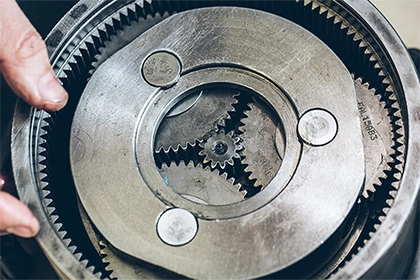
What motor does the fan coil use?
Fan coil units regulate temperature, improve comfort, and facilitate integration with building automation systems. What motor should be used to maximize its efficiency?
Fan coil units are widely used in many new construction projects due to their energy-saving, stepless speed regulation, quiet operation, and long lifespan, and they are also increasingly recognized and favored by the market. Do you know what kind of motor is often used in fan coil units? The answer is brushless DC motor. So, what are the differences and distinctions between brushless DC fan coil units and ordinary AC motor fan coils?

The Difference Between the Two
- Motors are different
The main difference between the DC brushless fan coil unit and the traditional fan coil unit is the use of a DC brushless motor (DCBL) for the former, while the latter uses an AC motor.
- Different appearance
Because the DC brushless fan coil unit supports centralized control and building system interconnection protocols like Modbus, the control module of the unit is noticeably larger than that of a regular AC motor fan coil control module.
- Different number of gears
Traditional fan coil fan speed regulation is achieved through a thermostat, usually with only three adjustable fan speeds: high, medium, and low. In contrast, the DC brushless fan coil allows for infinite adjustment of air volume, precise control of indoor temperature, and improved indoor comfort.
- Different energy consumption
The DC brushless fan coil unit adopts a brushless DC motor, which is a stepless speed motor and uses a permanent magnet as the magnetic core. The motor efficiency can reach up to 90%. Compared with traditional fan coil units, under the same air supply volume, the average energy-saving rate of DC brushless fan coil units can reach over 47%.Traditional fan coil units use conventional valves without balance function. The opening and closing of valves in the branch water circuit of the water system leads to hydraulic imbalance, resulting in frequent start-up of the main unit and water pump, and high energy consumption. The valves equipped with the brushless DC fan coil unit have balance function, which ensures hydraulic balance between the branch water circuits of the water system, thus achieving energy saving and consumption reduction.
- Different Noises
The DC brushless fan coil unit uses electronic commutation instead of the traditional mechanical commutation method - carbon brush commutation, effectively avoiding the electromagnetic interference and electromagnetic noise generated in mechanical commutation. It operates stably, with low vibration, greatly reducing the vibration noise caused by switching on and off and acceleration.
- Control Different
Traditional fan coil units and control systems currently available in the market do not have networking capabilities. They rely mainly on manual control, which is not convenient for centralized management and incurs high labor costs.
The DC brushless fan coil unit can flexibly connect with building control, and can be interconnected through the standard protocol of the boiler, or directly monitored through the Internet; it can be centrally managed, remotely controlled, without the need for manual operation, saving a lot of labor costs.
- Different initial investment costs
The price of traditional AC motor fan coil units is significantly lower than that of DC brushless fan coil units. DC brushless fan coils are generally about 150% more expensive than AC motor fan coils. Many DC brushless fan coil units must use dedicated temperature controllers. These temperature controllers have higher regulation capabilities and building control communication interfaces, so their prices are also higher than those of ordinary temperature controllers used in AC motor fan coil units.
Conclusion
DC brushless fan coil units offer long-term energy savings, precise control, reduced noise levels, enhanced networking capabilities, and advanced features, making them a compelling choice despite higher initial costs in modern HVAC systems.



Leave a Comment